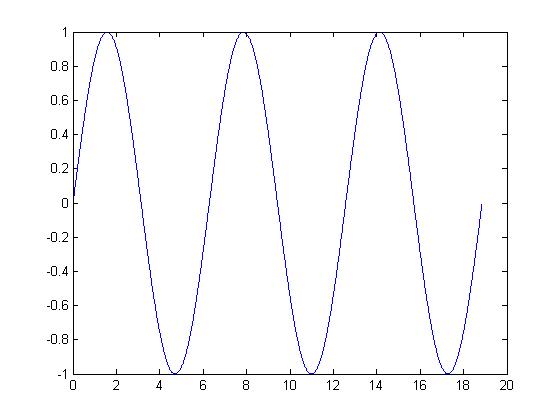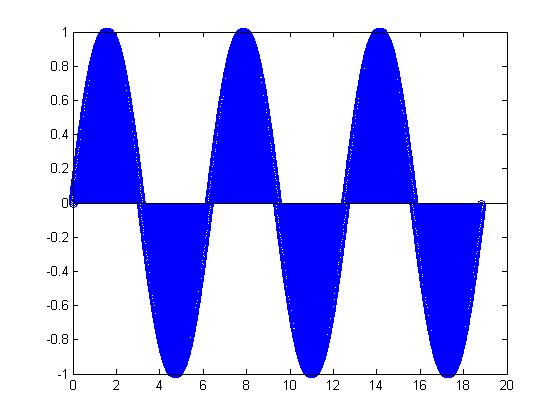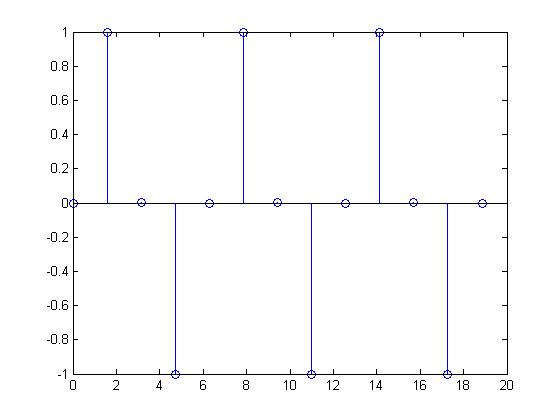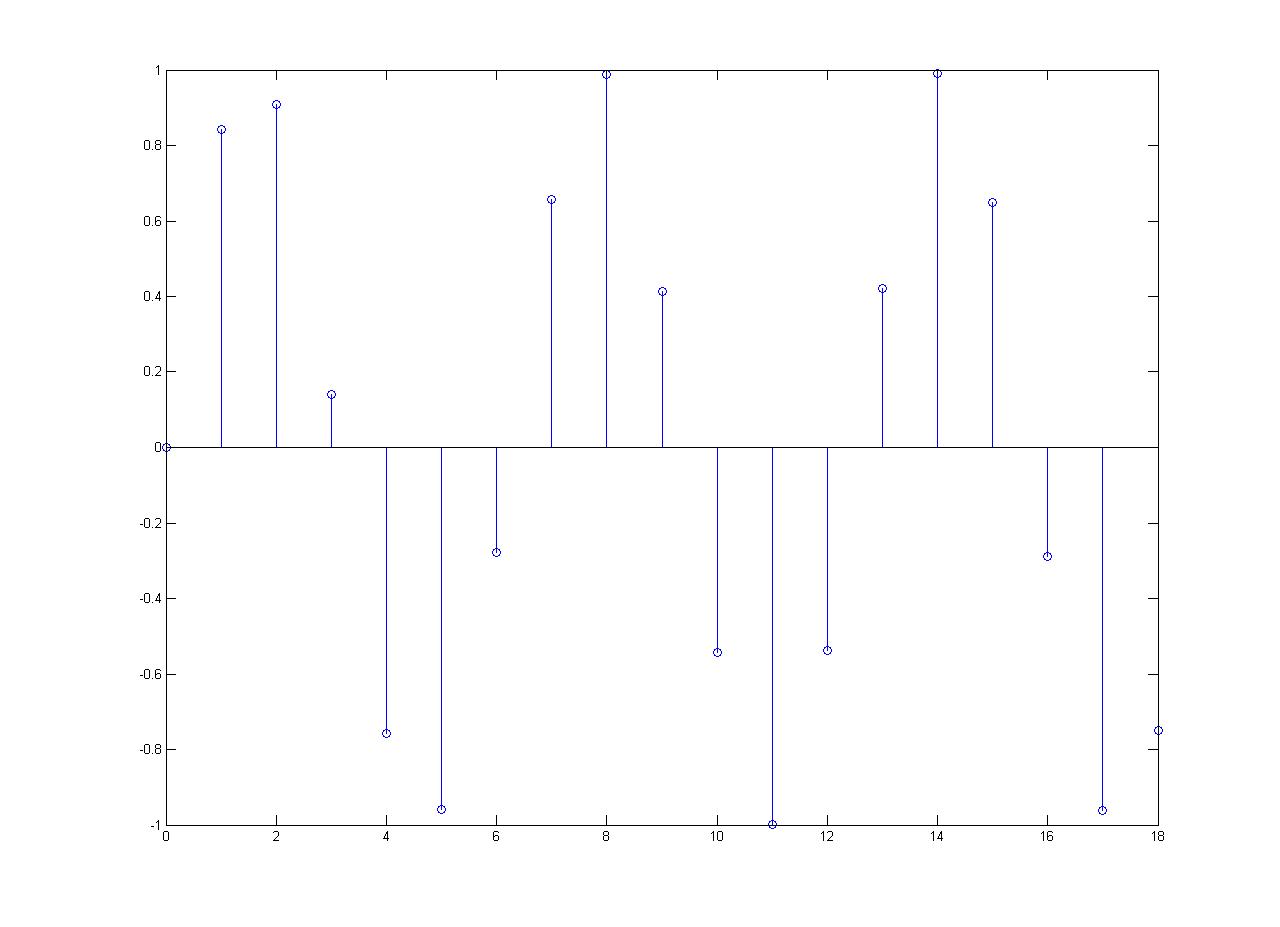(→1. Creating two DT signals (one periodic and one non-periodic) from a periodic CT signal) |
|||
| Line 14: | Line 14: | ||
Sampling every <math>t = \pi</math> | Sampling every <math>t = \pi</math> | ||
[[Image:Samp pi_ECE301Fall2008mboutin.jpg]] | [[Image:Samp pi_ECE301Fall2008mboutin.jpg]] | ||
| + | |||
| + | As can be seen from the graph, the values of x[n] are periodic because they repeat after every period of <math>t = 2\pi</math> | ||
==Non Periodic Signal== | ==Non Periodic Signal== | ||
Sampling every t = 1 | Sampling every t = 1 | ||
[[Image:Samp1_ECE301Fall2008mboutin.jpg]] | [[Image:Samp1_ECE301Fall2008mboutin.jpg]] | ||
Revision as of 08:50, 11 September 2008
1. Creating two DT signals (one periodic and one non-periodic) from a periodic CT signal
Let x(t) = sin (t), which is a periodic CT signal
Periodic Signal
As can be seen from the graph, the values of x[n] are periodic because they repeat after every period of $ t = 2\pi $





